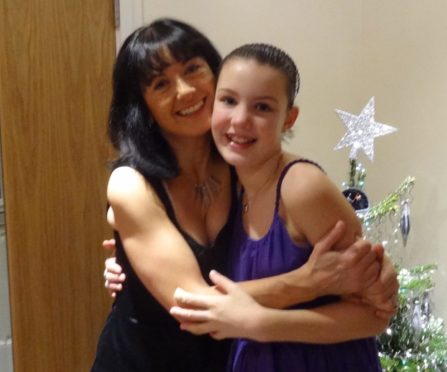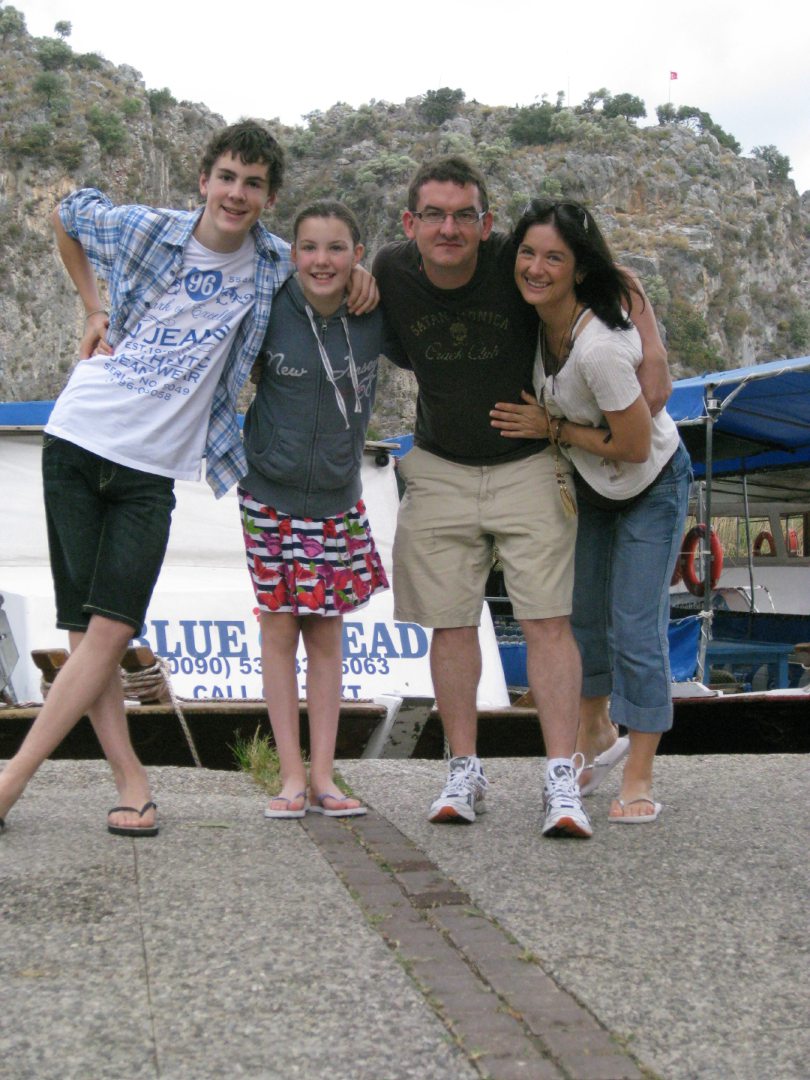
A mother who fought for six years to expose how a series of failures contributed to her teenage daughter’s death is calling for a complete overhaul of Child and Adolescent Mental Health Services.
Sophie Parkinson was just 13 when she took her own life at her home in Liff near Dundee in March 2014. The High School of Dundee pupil had been in the care of NHS Tayside CAMHS at the time.
Earlier this month, a Fatal Accident Inquiry into Sophie’s death concluded that a structured risk assessment and better communication between her parents and CAMHS could have prevented Sophie’s death.
Sheriff Lorna Drummond, who led the FAI, described both the service’s system of risk assessment and management, and communicating and recording patient care with patients and their parents as “defective”, and found there was “confusion” over who was responsible for Sophie’s care.
Sophie’s mother, Ruth Moss, told The Sunday Post she hopes the inquiry’s findings has illuminated where the system is failing and the urgent need for improvement.
“Sophie’s death would have been absolutely preventable had her standard of care been better,” said Ruth. “There were a lot of failings in terms of risk assessment, accountability, communication and how much we were involved in Sophie’s care. Securing the FAI was a brutal process but we got the answers we were looking for. The whole CAMHS system needs an overhaul.”
Ruth remembers her daughter as a clever, artistic, funny and incredibly kind girl who loved to cook and dreamt of becoming a vet. Sophie was first referred to CAMHS when she was eight, when Ruth realised “she just wasn’t the happy child I knew”. From the age of 10, Sophie was frequently in a low mood, had begun self-harming and was having suicidal thoughts. She received intermittent support from CAMHS. Ruth said: “I knew that, behind that mental illness, she was an amazing individual and I loved her to bits, but she was struggling.”
Sophie was seeing a psychologist in the months before her death. Troubled, she had attempted suicide twice and was frequently self-harming, yet her psychologist suggested she was only at moderate risk – an issue that frustrated Ruth throughout Sophie’s care.
“The FAI revealed that Sophie disclosed she had she tried to take her own life and her psychiatrist wrote in his notes that he didn’t think it was a serious attempt,” said Ruth. “I still struggle to understand why her level of risk was always downplayed.”
Details of Sophie’s care exposed during the inquiry starkly highlight Ruth’s argument for better communication between CAMHS clinicians and parents. “In the last appointment Sophie had with a psychologist, five days before she died, her notes revealed that Sophie had indicated the methods by which she wanted to die by suicide. That information was never communicated to me,” said Ruth.
“I respect the need for patient confidentiality but there’s a time and a place for breaking confidentiality, in order to help us keep our child safe. If I’d known that information, alarm bells would have rung over Sophie’s certain behaviours. If she had locked herself in her room for some reason, I would have been right in there. It was hard to read in the notes afterwards, that she had told them this and they hadn’t taken it seriously.”
The FAI identified that, had there been a structured risk assessment to correctly categorise Sophie’s suicide risk, a modified approach to patient confidentiality to allow her parents more input into her care, and the provision of further family therapy, the teenager’s death could have been avoided. It also recommended providing an out-of-hours contact number for CAMHS.
“I was desperate for clinicians to understand how difficult things were at home because of Sophie’s mental health. Sophie would often tell people what she thought they wanted to hear, but she really was very unwell. I wanted to make CAMHS aware of Sophie’s self-harming but there was not a communication channel for parents to have that involvement.”
Ruth, a research nurse who now lives in Edinburgh, added: “There needs to be investment in CAMHS. It shouldn’t be the poor relation of the NHS. However, the CAMHS system is under-resourced and requires better framework and guidance.
“In Sophie’s case, each person said somebody else was responsible for her care. There was no single point of contact. That isn’t a unique problem to Tayside but a structural failure in the way CAMHS is set up, which could be solved with very little money.
“We need to start treating mental illness in children the same way we would treat physical illness. If a child was in hospital with a physical illness, there would be a consultant involved in their overall care, a clear hierarchy, frameworks, and safety policies and procedures in place to protect your child. In my experience, mental health isn’t set up in the same way.”
Following the FAI, other grieving parents have reached out to Ruth to share similar experiences. “Parents contacted me saying this also happened to their child. It is disconcerting to know Sophies is not the only child affected. The quality of CAMHS care across Scotland needs to be addressed.”
Ruth is determined to continue campaigning for improvements. “I was angry that I’d not got the help for her I thought she needed. I don’t want any other families or young people to go through this.”
She added: “Losing Sophie was like losing a limb. I lost a part of myself. You don’t just grieve for what you’ve lost. You grieve for the future you will never have with them.”
Samaritans can be contacted via their helpline 116 123 or by email jo@samaritans.org

Enjoy the convenience of having The Sunday Post delivered as a digital ePaper straight to your smartphone, tablet or computer.
Subscribe for only £5.49 a month and enjoy all the benefits of the printed paper as a digital replica.
Subscribe © SYSTEM
© SYSTEM